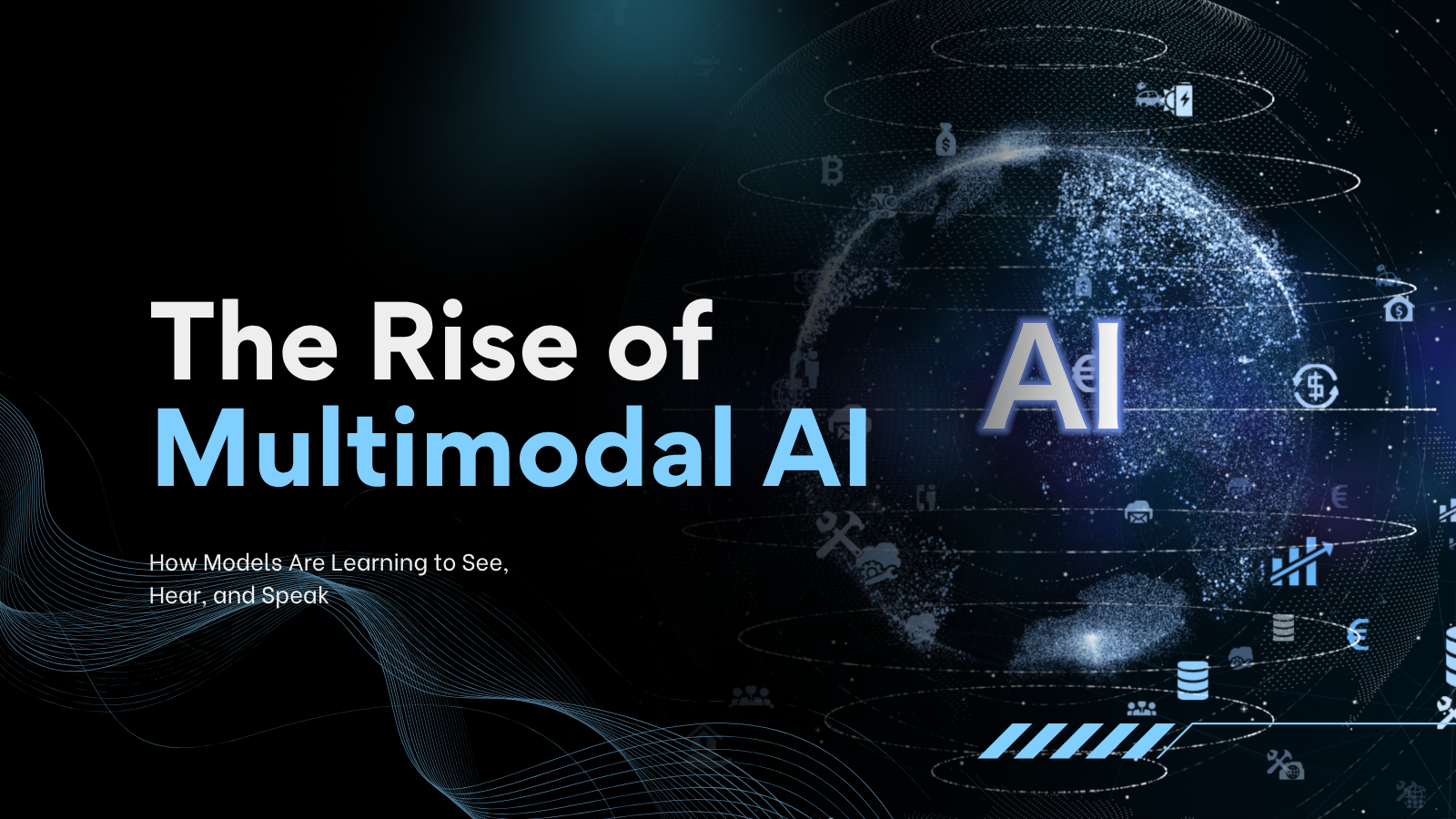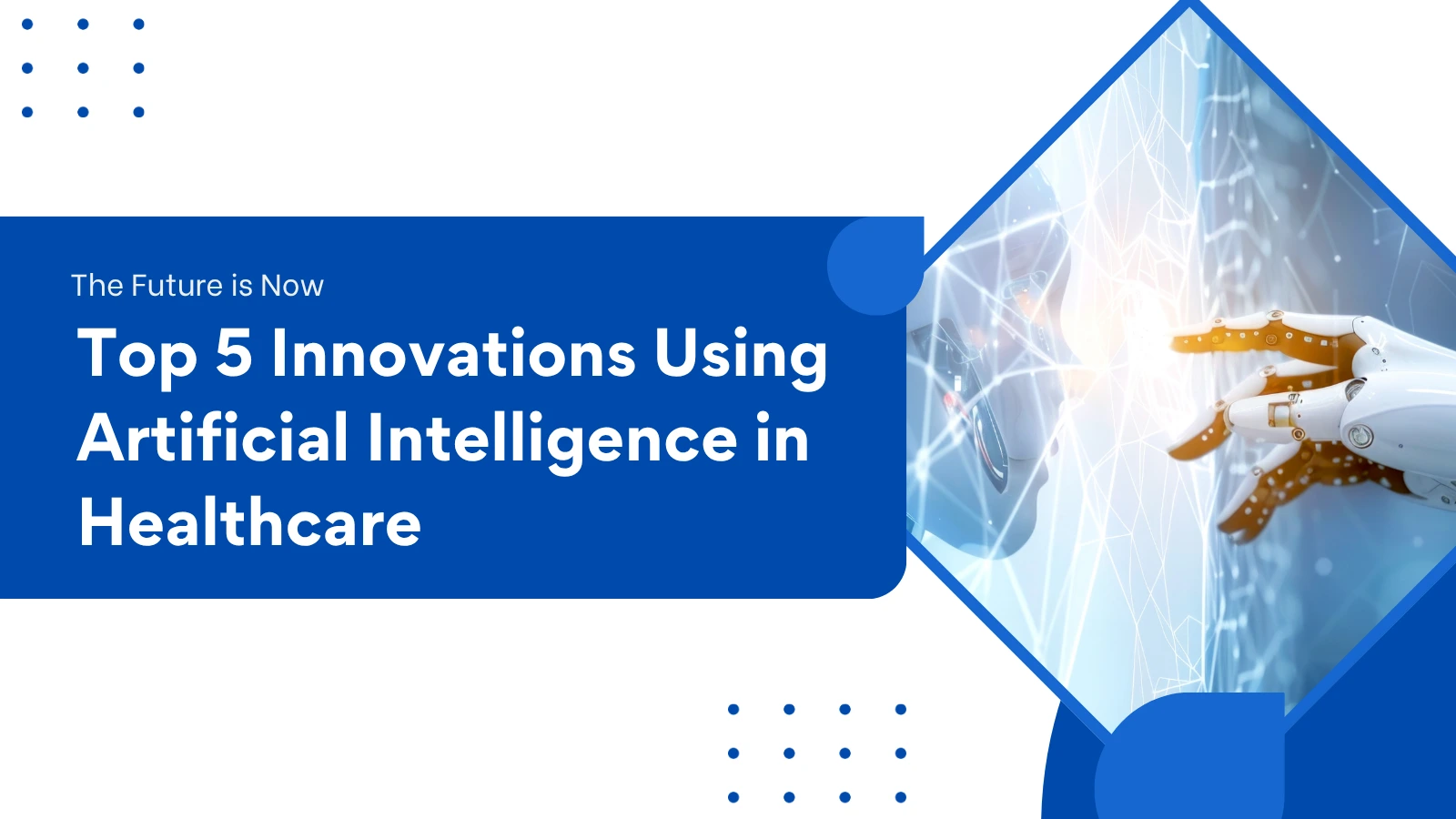The Rise of Multimodal AI: How Models Are Learning to See, Hear, and Speak
Overview: An Emerging Era of Artificial Intelligence
Multimodal AI: What is it?
Multimodal AI is the term for artificial intelligence software that can read and write data using a variety of data input techniques. For example, a multimodal AI may evaluate an image, comprehend a spoken instruction on the same image, and then output its findings in writing. These devices simulate how language, music, and imagery are naturally processed by the human brain. The technique makes AI more contextual and intuitive, which improves the user experience. Top organizations that offer AI development services are utilizing this technology to create future-generation applications that erode the distinction between digital and physical interactions.
The Transition from Single-Modal to Multimodal Models
Early AI models were limited by modality. Those based on text were able to work with language but possessed no knowledge of images or audio. Those based on vision, conversely, were able to identify images but had no linguistic processing. Current innovations—led by models such as OpenAI's GPT-4o and Google DeepMind's Gemini—have shattered these silos, unifying modalities within a single system. This union enables richer applications, such as AI systems that caption images, compose music, or even engage in real-time chat while understanding visual input. These kinds of breakthroughs are especially worthwhile for an app development company that wants to remain at the forefront of technological innovations.
Technological Foundations Behind Multimodal AI
Core to multimodal AI are sophisticated machine learning architectures such as transformers, CNNs, and attention models. These architectures enable the AI to translate connections between multiple data types. For instance, one transformer-based model can register pixels in an image against matching descriptive text. Training data for multimodal AI is also more sophisticated, typically comprised of synchronized inputs—such as video and subtitles or labeled audio-visual clips. AI development services working in this area need to be thus armed with the computational capability, skills, and frameworks necessary to develop and refine such models.
Applications of Multimodal AI
Multimodal AI is not an abstract concept—it's already transforming industries. In medicine, it helps diagnose diseases by mapping MRI scans to patient reports. In education, AI teaching aids can respond to questions on diagrams or interpret video lessons in natural language. For online commerce, AI may assist consumers by processing product images and responding to voice or text-based questions. A company developing apps with multimodal AI-powered mobile and web applications can provide transformative user experiences, making regular apps into smart digital assistants.
Voice and Vision: The Future of Interaction
The convergence of voice and vision is among the most compelling aspects of multimodal AI. Consider an AI system that can visualize a malfunctioning appliance through camera input, listen to a user explain the problem, and issue verbal repair guidance. This kind of interaction is on its way. Applications like these are priceless in industries such as manufacturing, customer support, and remote medicine. AI development companies are now looking at how to bring these capabilities into consumer applications and enterprise software.
Accessibility and Inclusion with Multimodal AI
Multimodal AI isn't just about efficiency, though—it's also about inclusivity. For people with disabilities, such systems provide unparalleled accessibility. Blind users, for example, can take advantage of AI that narrates their surroundings through audio feedback. In the same vein, users with hearing disabilities can leverage AI-created captions and visual signals. This universalization of technology guarantees increased access to digital services. Development companies emphasizing social good and universal design are increasingly incorporating multimodal AI to create inclusive platforms.
Challenges of Developing Multimodal Systems
While promising, there are formidable challenges in developing multimodal AI. Data alignment is a significant challenge; aligning video frames with accurate captions or aligning audio with textual meaning is painstaking work. There's also the model complexity question—more modalities equal more parameters, which results in greater computational requirements. There are ethical challenges such as privacy and bias in multi-source data that must be addressed with care. Consequently, companies dealing with AI development services need to overcome these challenges carefully in order to design responsible and efficient solutions.
The Role of Open-Source and Collaboration
The emergence of multimodal AI is led not only by big tech but also by academic institutions and open-source groups. Hugging Face, GitHub, and TensorFlow are some platforms which have opened up tools and data sets to developers, so more developers can try multimodal architectures. Collective work has spurred innovation, enabling even small app development firms to play in this high-technology space. Business can remain current, exchange ideas, and co-create breakthrough applications by joining these communities.
Multimodal AI in the Consumer Market
From virtual shopping assistants to virtual reality video games, multimodal AI is finding its way into consumer products. Smart speakers recognize faces, hear voice commands, and provide visual feedback. Social media platforms employ it to auto-caption videos and identify content themes. As the consumer demand for interactive and smart products increases, app development firms have a golden chance to integrate such features within regular apps, giving consumers seamless and customized experiences.
Enterprise Adoption of Multimodal AI
Large enterprises are rapidly embracing multimodal AI to streamline operations, improve customer service, and drive innovation. In customer support, AI can analyze voice calls, detect user emotions, and suggest visual guides. In logistics, systems that integrate visual inspection with textual inventory reports boost efficiency. For businesses offering AI development services, this presents a lucrative opportunity to consult, build, and maintain complex multimodal ecosystems for corporate clients.
The Economics of Multimodal AI Development
Constructing multimodal systems is not inexpensive. Large-scale data, expert talent, and strong GPUs are all required, making it a capital-extractive process. But as cloud infrastructures provide scalable computing capability and pre-trained models are more readily available, the cost wall is gradually coming down. For an app development business, this translates into being able to prototype and experiment with multimodal functionality without huge initial investment. Also, monetization schemes—ranging from subscription-based services to AI-as-a-service offerings—make it economically feasible.
Security and Privacy Issues
The use of multimodal AI poses significant security and privacy concerns. Devices that observe, hear, and answer can feasibly collect sensitive information. It's the responsibility of developers and AI development service providers to put in place strong data governance, encryption, and transparency measures. In addition, users should be provided with transparent control of their data usage and storage. Ethical AI methods are not a choice—they are necessary to establish trust within multimodal systems.
What Does Multimodal AI's Future Hold?
Multimodal AI promises even more sophisticated and immersive interactions in the future. We can anticipate digital twins that mimic human decision-making in a variety of situations, helpful robots that navigate real-world surroundings, and AI partners that can recognize emotion from tone and facial expression. Sustained research expenditures combined with ethical development methods will guarantee that this technology serves all of humanity. For AI innovators and app development firms, the future is full of opportunity and responsibility.
Conclusion: Embracing the Multimodal Revolution
The multimodal AI revolution is a new era in the history of artificial intelligence. Learning to hear, see, and speak, multimodal systems are revolutionizing human interaction with machines. The applications cut across industries—ranging from healthcare and education to entertainment and business solutions. Organizations with expertise in AI development services and visionary app development firms are leading this revolution. By adopting this change, they have the potential to create a future where AI is no longer an instrument but a working partner in addressing practical problems.
Subscribe Now
Get the weekly updates on the newest brand stories, business models and technology right in your inbox.
More Blogs
The Future is Now: Top 5 Innovations Using Artificial Intelligence in Healthcare
The care industry AI or artificial intelligence has brought a neoteric twist in the field of diagnosis. Consequently, it has significantly increased the speed and precision of the diagnostic process that used to be rather slow and boor...
The Smart World 2.0: IoT + AI + 6G
The future is coming sooner than ever, and it's being constructed on the mighty convergence of three cutting-edge technologies: the Internet of Things (IoT), Artificial Intelligence (AI), and 6G connectivity. Together, these forces are...
How 5G and Edge Will Shape the Next 5 Years of App Innovation
Over the next five years, the combined power of 5G and edge computing will remake the app innovation landscape. As they evolve, they will act as dual engines fueling an age of hyperconnectivity, real-time responsiveness, and scalable a...

 Awards & Recognition
Awards & Recognition








